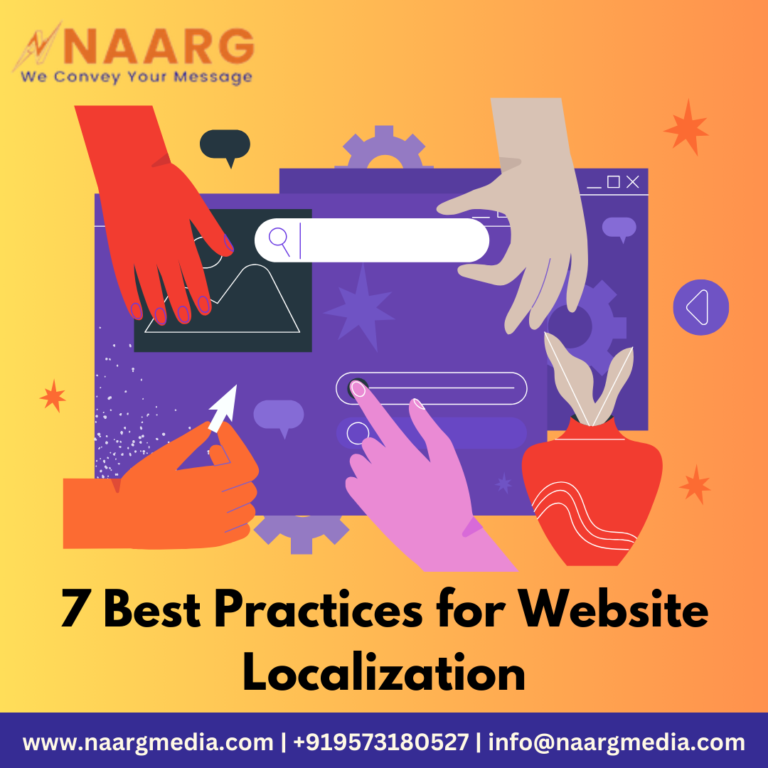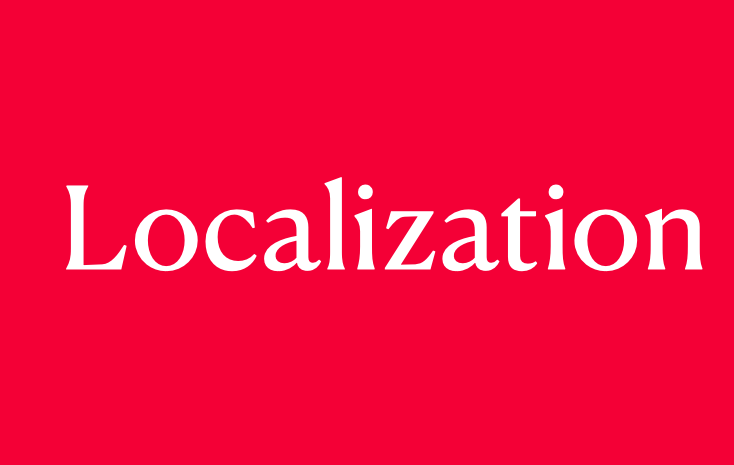Websites are becoming increasingly valuable assets as more and more people around the World can access the Internet. Websites can attract potential customers with information about the product or service of a brand or business.
However, the website message should be clear and understandable to the target audience reading the website content.
Some readers reside in foreign countries and English is not their native language. So the website content needs website translation into the local language. It is the first and foremost step of website localization.
Read this article further to learn more about website localization, challenges faced when localizing a website and best practices for website localization.
So, let’s get started.

What is the Goal of Website Localization?
Localizing website content into a new target language can vastly expand search engine optimization, multiplying the reach, and conversions across the World. Nowadays, brands and businesses are searching for new ways to capitalize on Search Engine Optimization (SEO) Techniques to improve their visibility.
Website localization is about modifying the website content to connect with your potential customers in the target market. While localizing a Website, it is essential to modify website content such as blogs, lead generation offers, guides, static pages like your homepage, and user interface.
And to localize your website content, you need a localization team, and a localization team can have small but efficient team members. With the help of the localization team, the Localization Process gets completed more smoothly and efficiently.
A recent report suggested that 76% of audiences prefer to read their content and prefer purchasing products in their native language. Website localization helps improve customer engagement and establish communication with a target market and target audience.
It helps garner the trust of the potential customers and the target market will appreciate the effort that you put to improve their user experience. The business revenue is bound to increase and build credibility if the localized website reaches the target audience and engages them.
The ultimate goal is to create a website that feels like it was created specifically for that target audience rather than a generic website that has been translated into another language.
7 Best Practices for Website Localization
Website localization is the process of adapting a website to suit the linguistic, cultural, and other preferences of the target market. It involves changing a website to make it more appealing, engaging, and accessible to users in different regions or countries.
Here we have listed seven best practices for website localization.
1. Understand your Target Audience
Before you start localizing your website, it’s essential to understand your target audience. It includes the local language, culture, and preferences. Conducting Market research and user interface testing can help you gain insights into your target audience.
2. Use Local Language and Cultural References
When localizing your website, always ensure that you use the local language and cultural references. It will help users to relate to your website and feel more comfortable using it. Be careful with colloquialisms or idioms that might not translate well or could have a different meaning in the target language.
3. Localize Visuals and Graphics
Visual elements such as images, icons, and colors vary widely across cultures. Be sure to localize these elements to make your website more appealing to your target audience. Various cultural associations can prompt different reactions to the same content. So it is essential to localize visuals and graphics according to the target audience.
4. Ensure Website Functionality and User Experience
Always ensure your website is fully functional and easy to use in the target market. It includes ensuring that the website loads quickly, has intuitive navigation, and is mobile-friendly. The target audience will feel welcomed on your website due to a seamless user experience and encourage them to spend more time on the Website.
5. Localize Content and Messaging
When localizing your Website, ensure that your content and messaging are appropriate for the target audience. It includes avoiding cultural or political sensitivities and ensuring your messaging is relevant and appealing to your target audience.
6. Optimize for Search Engines
Make sure that your website is optimized for search engines in the target market. This includes using the correct keywords, optimizing metadata, and creating content that is relevant to the target market. This helps increase the engagement of your business from the target audience.
7. Use Local Hosting and Domain Names
Using local hosting and domain names can improve website performance and SEO in the target market. This is because local hosting can help to reduce latency and improve website traffic times, while local domain names can help to improve search engine rankings.
Localizing your website opens up new opportunities for your brand and helps you expand your business globally. By following these best practices for website localization, you can ensure that your localized website effectively reaches and engages your target audience, leading to increased traffic, engagement, and conversion.
The perfect website localization starts with choosing the best translation and localization company that understands your needs and can help you achieve your globalization goals.
We at Naarg understand how important it is for companies to grow their brands and business in an international market while maintaining consistency in their message. Regardless of the industry or language, we adapt your website to the local culture.
The professional website localization services we offer go beyond mere translation: we consider a specific market’s contemporary language usage and cultural nuances to tailor a product or service message for that market.
Providing multilingual services for web content and platform localization is one of the most comprehensive language solutions our website localization company offers.
We translate your content into multiple languages, adjust the user interface layout to accommodate right-to-left languages, and implement a wide variety of web techniques that work for different audiences and devices.
With years of experience in website localization, our team of professional website localization experts has you covered. Providing accurate and authentic services is what we do best.
Need a hand in localizing your website, Naarg Data Media Services can help you with your localization services.
Reach us at info@naargmedia.com to know more about translation and localization services.

